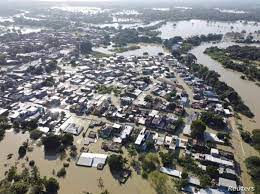The United States’ cumulative insured property losses last year have been estimated to be over $68 billion in 2020, as 19 catastrophe events with each leading to more than $1 billion in claims hit the country during the year.
A news report by artemis.bm, a research firm specialising in catastrophe bonds, insurance linked securities, reinsurance capital & investment, risk transfer intelligence, linked the loss figures to data from Verisk’s Xactware and PCS units on the country’s
According to the news, Xactware’s 2020 property report found that extreme catastrophe and weather, alongside pandemic related effects, drove property insurance claims higher last year.
The company expatiated: “The global pandemic and damage from winds and hurricanes had a profound impact on property claims and pricing trends throughout 2020,”, highlighting that in total over 6.97 million property claims were logged during the year.
It added that the claims burden facing insurers, which had a subsequent negative impact on reinsurance capital as well, peaked in August with 883,128 claims filed, totaling $9.44 billion in property losses.
Xactware further explained that Hurricane Laura, the Midwest Derecho and wildfires that broke out across the western states, drove a surge in claims activity in what was an already challenging year.
A further analysis of the report showed that more than 140,000 of the property insurance claims processed by Xactware in 2020 had a virtual aspect to them, as the industry adjusted to the pandemic, representing a 228% increase from the preceding year.
Commenting on the report findings, president of Verisk’s Xactware, Mike Fulton, said: “We’re proud to have had the technology available to help the property industry rapidly adapt to meet the needs of customers during the global pandemic, while ensuring the safety of staff, vendors and policyholders.
“Without visiting a customer’s home or business, insurance adjusters can communicate with customers via video chat, access estimation and other relevant data, and process claims rapidly.
“When catastrophe struck, the industry was ready to support their customers at the hour of their greatest need. As a result, these digital tools and solutions have become an integral part of how work gets done”, the risk research expert added.






